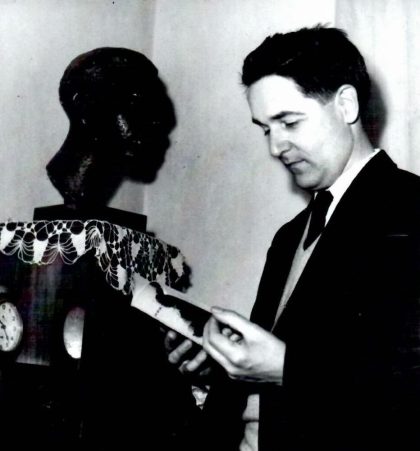That’s the highest share of first-time-buyer purchases in the history of the survey, which dates back to 1981.
The 2010 National Association of REALTORS® Profile of Home Buyers and Sellers is the latest in a series of large national NAR surveys evaluating demographics, preferences, marketing and experiences of recent home buyers and sellers. The study was released at the 2010 REALTORS® Conference & Expo.
Although typical sellers had been in their previous home for eight years, up from seven years in the 2009 study, first-time buyers plan to stay for 10 years and repeat buyers plan to hold their property for 15 years. Home buyers today have affirmed a long-term view of home ownership, the typical seller is experiencing positive returns and the vast majority of home owners see their property as a good investment, according to the latest consumer survey of home buyers and sellers.
Even with several years of price declines, the typical seller who purchased a home eight years ago experienced a median equity gain of $33,000, a 24 percent increase, while sellers who were in their homes for 11 to 15 years saw a median gain of 40 percent.
House flipping is virtually nonexistent in today’s market. “The primary exception is for experienced investors, many of whom pay cash and are making renovations or improvements after a careful study of properties, neighborhoods and market demand,” Golder explained. “The house flipping and quick gains which occurred during the boom period were abnormal, driven by risky, easy-money financing that should never have been allowed in the market.”
In the 2006 study, covering sellers during the close of the housing boom, 6 percent of sellers had owned their property for less than a year and a total of 30 percent had owned for three years or less. In the 2010 study, only 3 percent had owned their home for less than a year and a total of 11 percent had owned for three years or less.
The next biggest reasons for buying, identified by all home buyers, were desire for a larger home, 9 percent; a change in family situation and the home buyer tax credit, cited by 8 percent each; a job-related move, 7 percent; and the affordability of homes, 6 percent. Twelve other categories were 5 percent or less.
The number of first-time home buyers rose to a record high 50 percent of all home sales from 47 percent in the 2009 study, building on success of the home buyer tax credit which began in 2009. The previous cyclical high for first-time buyers was 44 percent in 1991; records date back to 1981.
The profile shows the median age of first-time buyers was 30 and the median income was $59,900. The typical first-time buyer purchased a 1,540 square foot home costing $152,000, with 93 percent using the first-time buyer tax credit.
First-time buyers who made a downpayment used a variety of sources: 74 percent used savings, 27 percent received a gift from a friend or relative, typically from their parents, and 9 percent received a loan from a relative or friend. Eight percent tapped into a 401(k) fund, and 6 percent sold stocks or bonds. Ninety-five percent chose a fixed-rate mortgage.
Fifty-six percent of entry level buyers financed their purchase with an FHA loan, while another 7 percent used the VA loan program. Forty-two percent said financing their first home was more difficult than expected and 9 percent had been rejected by a lender.
Fifty-eight percent of all buyers are married couples, 20 percent are single women, 12 percent single men, 8 percent unmarried couples and 1 percent other.
Buyers searched a median of 12 weeks and viewed 12 homes. Fourteen percent of buyers own two or more homes.
The typical repeat buyer was 49 years old, earned $87,000, and purchased a 2,000 square foot home costing $215,000.
The median downpayment of all home buyers was 8 percent, ranging from 4 percent for first-time buyers to 14 percent for repeat buyers.
The median age of home sellers was 49 and their income was $90,000. Sellers moved a median distance of 18 miles and their home was on the market for 8 weeks, down from 10 weeks in the 2009 survey. Half traded up in size, 28 percent bought a comparably sized home and 21 percent traded down.
Sixty-four percent of sellers chose their agent based on a referral or had used the same agent in the past. Reputation was the most important factor in choosing an agent, cited by 35 percent of respondents, followed by trustworthiness at 23 percent. Eighty-four percent of sellers are likely to use the same agent again or recommend to others.
Forty-four percent of sellers offered incentives to attract buyers, such as home warranties or assistance with closing costs. The typical home sold for 96 percent of the listing price, compared with 95 percent in the 2009 profile.
Home buyers thought the most important services agents offer are helping find the right house, and negotiating sales terms and price. Buyers also most commonly choose an agent based on a referral from a friend, neighbor or relative, with trustworthiness and reputation being the most important factors.
Buyers use a wide variety of resources in searching for a home: 89 percent surf the Internet, 88 percent use real estate agents, 57 percent yard signs, 45 percent attend open houses and 36 percent look at print or newspaper ads. Although buyers also use other resources, they generally start the search process online and then contact an agent.
When asked where they first learned about the home purchased, 38 percent of buyers said the Internet; 37 percent of buyers from a real estate agent; 11 percent a yard sign or open house; 6 percent from a friend, neighbor or relative; 4 percent home builders; 2 percent a print or newspaper ad; 2 percent directly from the seller; and less than 1 percent from a home book or magazine.
Eighty-five percent of home buyers who used the Internet to search for a home purchased through a real estate agent, while 70 percent of non-Internet users were more likely to purchase directly from a builder or from an owner they already knew in a private transaction.
Local metropolitan multiple listing service websites were the most popular Internet resource, used by 59 percent of buyers; followed by Realtor.com, 45 percent; real estate company sites, 43 percent; real estate agent websites, 42 percent; other websites with real estate listings, 41 percent; and for-sale-by-owner sites, 15 percent; other categories were smaller.
Seventy-seven percent of all buyers purchased a detached single-family home, 9 percent a condo, 8 percent a townhouse or rowhouse, and 6 percent some other kind of housing.
Commuting costs continue to factor strongly in buyer decisions, with three-quarters of buyers saying transportation costs were important.
Environmentally friendly features remain a significant factor: 88 percent of buyers said that heating and cooling costs were important, 71 percent desired energy efficient appliances, and 69 percent wanted energy efficient lighting.
Fifty-two percent of all homes purchased were in a suburb or subdivision, 18 percent were in an urban area, 17 percent in a small town, 11 percent in a rural area and 1 percent in a resort or recreation area. The median distance from the previous residence was 12 miles.
Not surprisingly, for-sale-by-owner transactions reached a record low, accounting for 9 percent of sales in the 2010 study, down from 11 percent in 2009. The share of homes sold without professional representation has trended down since reaching a cyclical peak of 18 percent in 1997. “In a market as challenging as today, it’s clear most home sellers need professional assistance,” Bishop said.
As seen in previous studies, many FSBO properties were not placed on the open market. Factoring out private sales between parties who knew each other in advance such as family or acquaintances, the actual number of homes sold on the open market without professional assistance was a record low 5 percent – the rest were unrepresented sellers in private transactions. The market share of open-market FSBOs is half of what it was six years ago – 10 percent were sold on the open market in 2004.
The median home price for sellers who used an agent was $199,300 vs. $140,000 for a home sold directly by an owner, but there were important differences. The median income of unassisted sellers was $64,000, in contrast with $93,200 for agent-assisted sellers. Unassisted sellers were much more likely to be selling a somewhat smaller home, and they were more likely to be in a rural area. Combined, these factors suggest a lower value for FSBO properties.
The most difficult tasks reported by unrepresented sellers are getting the right price, preparing and fixing the home for sale, understanding and performing paperwork, and selling within the planned length of time.
NAR mailed an eight-page questionnaire in July 2010 to a national sample of 111,004 home buyers and sellers who purchased their homes between July 2009 and June 2010, according to county records. It generated 8,449 usable responses; the adjusted response rate was 7.9 percent. All information is characteristic of the 12-month period ending in June 2010 with the exception of income data, which are for 2009. Because of rounding and omissions for space, percentage distributions for some findings may not add up to 100 percent.
www.realtor.org, November 05, 2010
Inman News






